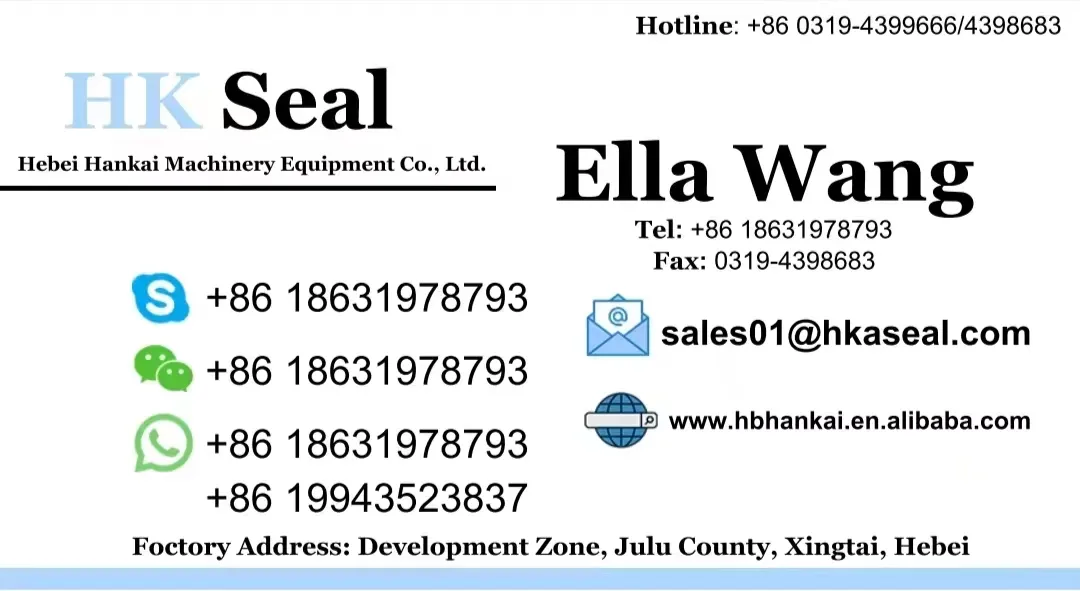Nov . 20, 2024 22:10 Back to list
hydraulic cylinder repair seals
Hydraulic Cylinder Repair Seals A Comprehensive Guide
Hydraulic cylinders are essential components in various industrial applications, from construction machinery to manufacturing equipment. They convert hydraulic energy into mechanical energy, allowing for powerful linear motion. However, over time, seals within these cylinders can wear out due to friction, temperature variations, and exposure to contaminants. This results in leaks, reduced efficiency, and, eventually, the need for repairs. Understanding hydraulic cylinder repair seals is vital for maintaining optimal performance and prolonging the lifespan of hydraulic systems.
Types of Seals
Hydraulic cylinders typically employ several types of seals, each designed to serve specific functions. The primary categories include
1. Rod Seals Located at the rod end of the cylinder, rod seals prevent hydraulic fluid from leaking out as the rod extends and retracts. They help maintain pressure within the cylinder and ensure a smooth operation.
2. Piston Seals These seals are found inside the cylinder and are responsible for preventing hydraulic fluid from bypassing the piston, which could compromise performance. Piston seals come in various designs, such as U-cups or O-rings, depending on the application.
3. Wiper Seals Also known as scraper seals, wiper seals are positioned at the rod's entrance. Their primary role is to keep contaminants, dirt, and dust out of the cylinder, ensuring the rod remains clean and reducing wear on the rod and seals.
4. Back-up Rings Often used in conjunction with other seals, back-up rings provide additional support to prevent extrusion of the seal material under high-pressure conditions. They bolster the performance of your sealing system by increasing its configuration strength.
Common Problems Associated with Seal Failure
Seal failure can lead to several issues, including
- Fluid Leakage This is the most apparent sign of seal failure, which can pose safety risks and environmental hazards. - Reduced Efficiency Loss of pressure due to leaks reduces the efficiency of the hydraulic system, leading to decreased productivity. - Increased Wear A compromised sealing system can lead to increased wear on the cylinder components, necessitating more frequent repairs.
hydraulic cylinder repair seals

Repairing Hydraulic Cylinder Seals
When it comes to repairing hydraulic cylinder seals, the process typically involves the following steps
1. Diagnostics Identify the source of the leak and assess the condition of the seals. This may require a thorough inspection of the cylinder and its components.
2. Disassembly Carefully disassemble the hydraulic cylinder. It’s essential to take note of each component’s orientation and position for reassembly.
3. Seal Replacement Remove the worn or damaged seals and replace them with new ones that meet the specifications of the original components. Selecting the correct material is crucial, as conditions such as temperature, pressure, and exposure to chemicals can affect seal performance.
4. Reassembly and Testing Once the seals are replaced, reassemble the cylinder, ensuring all components are correctly aligned. After reassembly, test the system under pressure to ensure that the seals function correctly and there are no leaks.
Preventative Measures
To prolong the life of hydraulic cylinder seals, consider the following preventative measures
- Regular maintenance schedules should be established to monitor seal performance. - Ensure that the hydraulic fluid used is clean and free of contaminants. - Use the appropriate seals for your specific application in terms of material and design. - Train personnel in the correct operation of hydraulic equipment to reduce the risk of seal damage.
In conclusion, hydraulic cylinder repair seals are crucial to maintaining the functionality and efficiency of hydraulic systems. Understanding the types of seals, recognizing potential issues, and knowing the repair process can save time and resources while enhancing the longevity of equipment. By prioritizing preventative maintenance, organizations can avoid costly repairs and ensure smooth operations.
-
Wiper Oil Seal: Our Commitment to Clean Hydraulics
NewsAug.13,2025
-
Hydraulic Oil Seal for Self Discharging Cars
NewsAug.13,2025
-
Hub Oil Seal for Agricultural Tractor Hubs
NewsAug.13,2025
-
Skeleton Oil Seal with NBR Material
NewsAug.13,2025
-
Rotary Lip Seal for High Pressure Applications
NewsAug.13,2025
-
Cylinder Seal Kits Our Legacy of Hydraulic Trust
NewsAug.13,2025
-
Unlocking the Potential of Hydraulic Systems with Essential Sealing Solutions
NewsAug.06,2025
Products categories
















